Charles Thomas

Aspiring Theoretical Physicist
Basics of Coffee
by Charles Thomas
Making coffee is all about dissolving coffee beans in water and we’ve come up with a myriad of ways to do it. But getting into this hobby can be overwhelming with plenty of confusing terms being thrown around. This post aims to explain the basic terms you’ll hear and how they affect you.
Beans
Since brewing coffee is all about trying to dissolve beans in water let’s start by talking about the beans themselves.
Roast
One of the most common terms you’ll hear when talking about coffee is the roast level. After coffee beans are harvested, they are roasted before they reach you to bring out their flavours. Roast level refers to how long the coffee beans are roasted.
The longer a coffee is roasted the darker the bean becomes. So, the roast level is often described in terms of colour. Usually, beans are classified into light, medium and dark roasts. Generally, lighter roasts are more acidic whereas dark roasts are more bitter (that very classic coffee flavour).
In supermarkets, the term strength might be used in place of roast level. With a stronger coffee being a darker roast. This is different to how people in the coffee world tend to use the term strength. In the coffee world, strength is used to refer to how much coffee is dissolved in some water (and therefore how strong it tastes)
When it comes to choosing a roast level, it is all about personal preference. There is no right or wrong. But if you’re not fond of the usual ‘coffee’ flavour you might surprise yourself if you try a lighter roast.
Grind Size
Dissolving a whole bean in coffee would take a lot of work. To make it easier we grind coffee up into smaller pieces. How small (fine) we should make the pieces depends on a lot of factors including the beans used, the brewing method, the water temperature.
So instead of talking about the best grind size for every specific method, let’s talk about why you should care.
How your coffee tastes depends on how much of the beans you’re able to dissolve into the water. Generally, you want to aim for 22% extraction (Note: this is not always the case - take a look at Scott Rao’s High Extraction Espresso). If you go too far above this (known as over-extraction) your coffee can end up tasting extremely bitter. If you go too far below (under extraction) your coffee ends up tasting sour.
Grind size is a big factor in how much of your coffee you’ll dissolve. If you grind too fine (small) you’ll make it too easy to dissolve the coffee and over-extract. Grind too coarse and your coffee will end up bitter. (Note: this is not always true and depending on your brew method of choice other things can go wrong)
Being able to control grind size and not having to rely on someone to have ground to the right size for your particular setup is a big reason why many people end up owning coffee grinders.
Single Origin
As you’re shopping for coffee beans you might come across the term: Single Origin. Single origin means that all those beans come from the same farm. The common alternative is a blend of beans from different farms. Despite snobbery from some people, one is not better than the other.
Species
There are two main species of coffee bean: Arabica and Robusta. Generally, Arabica is associated with better tasting coffees and a lot of the coffee on offer is of this species. Although you’ll find Robusta often used in espresso blends.
Brew Methods
Now we’ve talked about beans let’s talk about how to brew them. Brew methods can roughly be split into two categories so let’s start there.
Immersion
Immersion brews are where the ground coffee is allowed to sit (immersed) in water for a period of time and then filtered out. This is how the ever-popular French Press / Cafetiere works. It allows the beans to sit in water before using a cloth or metal filter pushed through the water filter them out.
Another popular immersion brewer is the Aeropress. It works by having the water and coffee sit together before using a plunger to push the mixture through a paper filter.
French press:
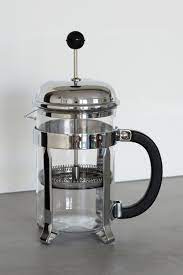
Aeropress:
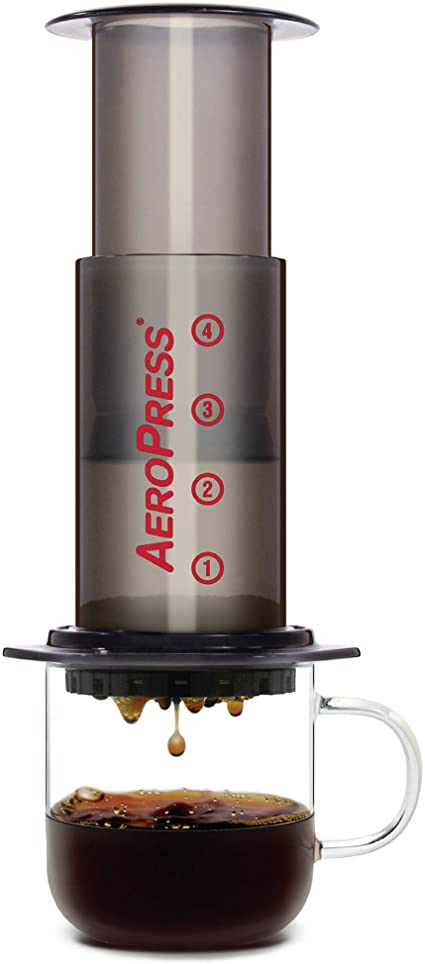
Percolation
Instead of letting the coffee and water hang out, you can instead force the water through the coffee. This method of brewing is called percolation.
There are lots of ways to push water through the coffee. One way is to use gravity, this method is known as a pour over and includes methods called the V60 and the Chemex.
V60:
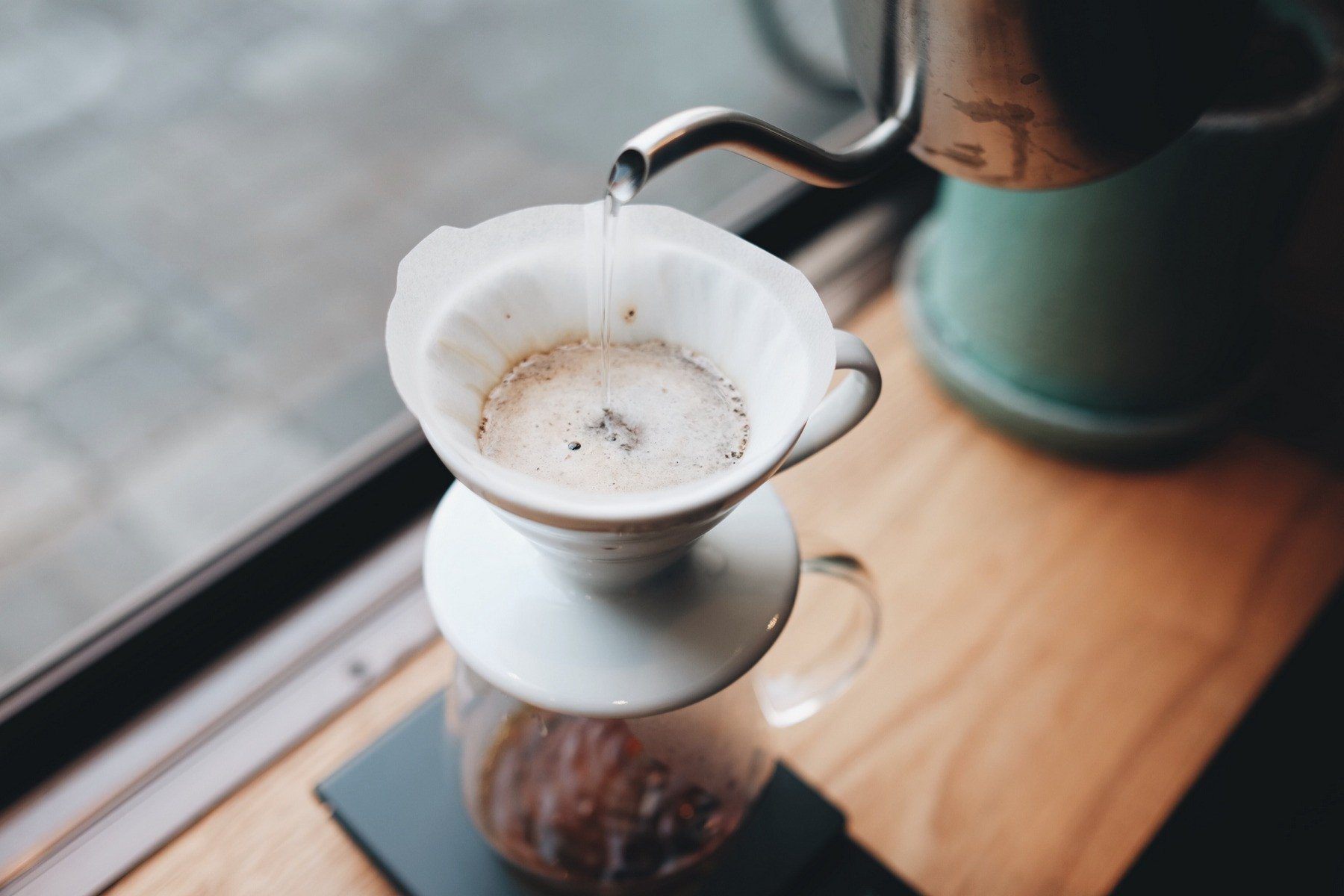
Chemex:
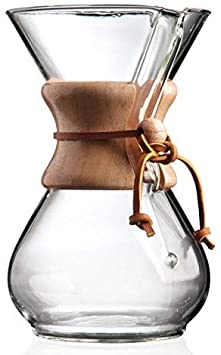
Another way is to heat water to generate steam and then use the steam to push water through the coffee. This is the basis of espresso brewing and the Moka Pot.
Mokapot:
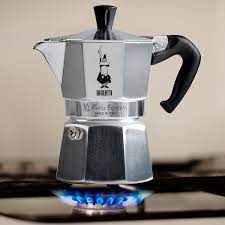
Espresso drinks
Since we’ve mentioned espresso it might be helpful to give a survey of the different kinds of espresso-based drinks you might find in coffee shops.
An espresso is a small strong shot of coffee.
An espresso diluted with water makes Americano or a Long Black.
An espresso may also be combined with milk. If it is combined with just steamed milk or milk with a very fine foam (known as a microfoam) then you get flat white. Whereas if it is served with steamed milk and foamed milk it is either a latte or a cappuccino (depending on the ratios of steamed milk and foamed milk).
Getting started
Brewing method
Since you’re made it this far you might be interested in getting more out of the coffee in your life. The first thing you’ll need is a method for brewing coffee. If you already have one - stick with it. There is no need to change what you’re using to brew your coffee.
However, if you are looking to get into brewing coffee then I would suggest starting with a french press. This is because immersion brews have slightly less to go wrong so it is easier to get great coffee from them. However, the V60 is also a great way to start brewing coffee and the plastic ones are available cheaply.
Beans
Once, you have a way of brewing coffee you’ll need to get some beans. I can’t tell you what beans you’ll enjoy but I will provide some links to companies I’ve enjoyed getting coffee from. Some of them will even grind the coffee for you so you can avoid the next step.
Grinder
That said if you really want to control the way you make coffee. There are many good options for grinders out there. One of the easiest ways to get started is with a hand grinder which gives you a cheaper way to get a high-quality grinder. I use a Porlex hand grinder but check out this video for more info.